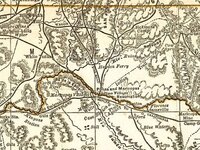Azquester
Bronze Member
- Dec 15, 2006
- 1,736
- 2,596
- Primary Interest:
- All Treasure Hunting
One thing I never posted was probably the most valuable of all I found. I'm still researching it.
It seems to be possibly a hubcap from a 1939 Oldsmobile missing the center emblem!
What was the car Travis was driving in?
This is another Video from the old highway 60 bridge at the Silver King road turn off. Listen and you can here the arcing of the high voltage lines above.
It seems to be possibly a hubcap from a 1939 Oldsmobile missing the center emblem!
What was the car Travis was driving in?
This is another Video from the old highway 60 bridge at the Silver King road turn off. Listen and you can here the arcing of the high voltage lines above.


 For what it's worth, here is my view.
For what it's worth, here is my view.

